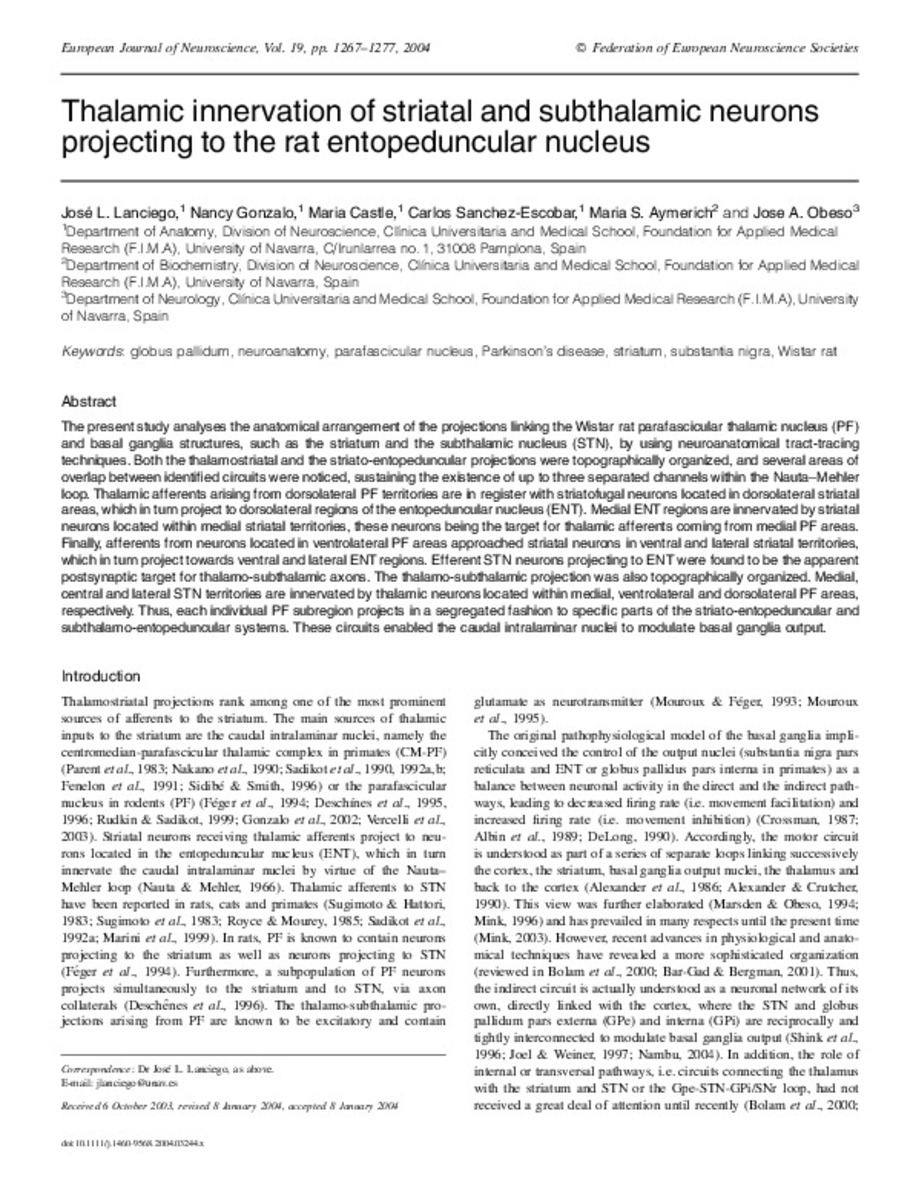Thalamic innervation of striatal and subthalamic neurons projecting to the rat entopeduncular nucleus
Keywords:
Globus pallidum
Neuroanatomy
Parafascicular nucleus
Parkinson's disease
Striatum
Substantia nigra
Wistar rat
Publisher:
Blackwell Publishing
Citation:
Lanciego JL, Gonzalo N, Castle M, Sanchez-Escobar C, Aymerich MS, Obeso JA. Thalamic innervation of striatal and subthalamic neurons projecting to the rat entopeduncular nucleus. Eur J Neurosci 2004 Mar;19(5):1267-1277.
Statistics and impact
0 citas en

0 citas en

Items in Dadun are protected by copyright, with all rights reserved, unless otherwise indicated.










